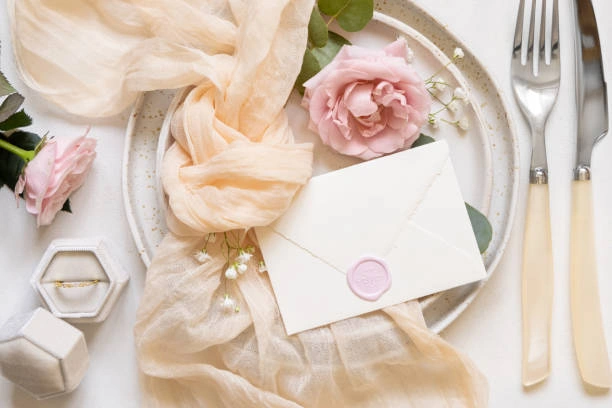Tulle fabric is renowned for its ethereal and light quality, lending a unique charm to a wide range of items. Whether it is a dreamy bridal veil symbolizing a new beginning, a gorgeous evening gown on the red carpet, or decorative curtains and other home decor that soften the ambience of a living space, tulle has an undeniable charm.
However, due to its intricate fine mesh structure and often delicate makeup, cleaning this fabric requires a gentle and meticulous approach. How to Clean Tulle Fabric? Only in this way can we preserve its inherent beauty and structural integrity.
Different Types of Tulle

Before delving into the cleaning methods, it’s essential to understand the different types of tulle. Tulle can be made from various materials, each with its own characteristics.
Nylon Tulle: Durable and relatively more resistant to damage compared to other types. It can withstand a bit more handling during the cleaning process. Nylon tulle is often used in dancewear and some less-formal decorative applications.
Silk Tulle: Extremely delicate and luxurious. Silk tulle has a natural sheen and a soft texture. It is commonly used in high-end bridal and formal wear. Cleaning silk tulle demands the utmost care to avoid damaging the fine silk fibers.
Polyester Tulle: A cost-effective option that is also relatively easy to clean. Polyester tulle is resistant to wrinkles and fading, making it suitable for a wide range of applications, from party decorations to everyday home decor.
Cotton Tulle: Soft and breathable, cotton tulle has a natural, matte finish. It is often used in items where a more rustic or natural look is desired, such as in some bohemian-style home decor or children’s clothing.
General Pre-Cleaning Precautions
- Check for Colorfastness: Before starting any cleaning process, it’s a good idea to test for colorfastness. Take a small, inconspicuous area of the tulle and dampen it with a bit of water or a mild cleaning solution. Gently blot the area with a white cloth. If no color transfers onto the cloth, the tulle is likely colorfast. If color does transfer, you’ll need to be extra cautious during cleaning to avoid bleeding.
- Remove Loose Debris: Shake the tulle gently to remove any loose dirt, dust, or lint. For larger items like curtains, you can also use a soft-bristle brush to carefully brush away debris. This step helps prevent scratching the tulle during the actual cleaning process.
General Pre-cleaning Precautions

Spot-Cleaning Tulle
Check for Colorfastness: Before starting any cleaning process, it’s a good idea to test for colorfastness. Take a small, inconspicuous area of the tulle and dampen it with a bit of water or a mild cleaning solution. Gently blot the area with a white cloth. If no color transfers onto the cloth, the tulle is likely colorfast. If color does transfer, you’ll need to be extra cautious during cleaning to avoid bleeding.
Remove Loose Debris: Shake the tulle gently to remove any loose dirt, dust, or lint. For larger items like curtains, you can also use a soft-bristle brush to carefully brush away debris. This step helps prevent scratching the tulle during the actual cleaning process.
Spot-Cleaning Tulle
Identify the Stain
Different stains require different treatment methods. For example, water-based stains like food spills or sweat can be treated differently from oil-based stains such as makeup or grease.
For Water-based Stains
Mix a small amount of mild, gentle detergent (preferably one designed for delicate fabrics) with lukewarm water in a bowl.
Dip a clean, soft cloth or a cotton swab into the soapy solution. Gently dab the stained area, being careful not to rub too hard as this can damage the tulle. Blot the area with a dry cloth to absorb the moisture and the dissolved stain.
For Oil-based Stains:
Sprinkle a small amount of talcum powder or cornstarch over the stain. Let it sit for a few minutes. These powders can absorb the oil.
After a few minutes, gently brush away the powder with a soft-bristle brush. If the stain is still visible, you can use a small amount of rubbing alcohol on a clean cloth and gently dab the stain. Be sure to test the rubbing alcohol on a small, hidden area first to ensure it doesn’t damage the tulle.
Hand-Washing Tulle

Prepare the Cleaning Solution: Fill a basin or sink with lukewarm water. Add a small amount of mild, delicate fabric detergent. Stir the water gently to dissolve the detergent. Avoid using harsh detergents, bleach, or fabric softeners as they can damage the tulle.
Submerge the Tulle: Carefully place the tulle into the soapy water. Gently swish the tulle around in the water, taking care not to tangle or twist it. If the tulle has a lot of folds or layers, make sure to separate them gently so that the cleaning solution can reach all parts.
Soak for a Short Time: Let the tulle soak in the soapy water for about 10 – 15 minutes. This is usually enough time for the detergent to break down the dirt and stains. However, don’t leave it soaking for too long, especially if it’s silk tulle, as this can cause damage.
Rinse Thoroughly: Drain the soapy water and refill the basin or sink with clean, lukewarm water. Rinse the tulle in clean water, gently swishing it around to remove all traces of the detergent. You may need to repeat this rinsing process a few times to ensure all the detergent is gone.
Remove Excess Water: After rinsing, carefully lift the tulle out of the water. Avoid wringing or twisting the tulle as this can cause it to stretch or lose its shape. Instead, gently press the tulle between two clean, dry towels to absorb as much water as possible.
Machine-Washing Tulle (with Caution)
Machine-washing tulle is generally not recommended, but in some cases, it may be possible. However, it should only be done with the utmost care and for certain types of tulle, such as nylon or polyester tulle.
Choose the Right Machine Settings: Select a delicate or gentle cycle on your washing machine. This cycle uses less agitation and lower spin speeds, which are less likely to damage the tulle.
Use a Mesh Laundry Bag: Place the tulle inside a mesh laundry bag. This provides an extra layer of protection, preventing the tulle from getting caught in the machine’s agitator or drum.
Add Detergent: Use a small amount of mild, delicate-fabric detergent. Avoid using too much detergent, as residue can be difficult to remove from the tulle.
Wash Alone: To prevent tangling and potential damage, it’s best to wash the tulle alone. If you need to wash multiple tulle items, make sure they are all similar in size and weight.
Check the Tulle After Washing: As soon as the cycle is complete, carefully remove the tulle from the washing machine. Check for any signs of damage or tangling. If there are any issues, address them immediately.
Special Considerations for Embroidered or Beaded Tulle

Spot – Cleaning for Embellishments: If the tulle has embroidery or beads, be extra careful during cleaning. Spot – clean any stains on the embroidery or beads using a soft, damp cloth. Avoid getting the embroidery threads or beads wet for too long, as this can cause the colors to fade or the beads to become loose.
Protecting Beads and Embellishments: When hand-washing or machine-washing (if applicable), consider placing a layer of soft fabric, such as a thin towel, between the tulle and the sides of the basin or the washing machine drum. This can help prevent the beads and embroidery from getting snagged or damaged.
Drying with Embellishments: When air-drying tulle with embroidery or beads, be careful not to hang it in a way that puts stress on the embellishments. You may want to lay the tulle flat on a drying rack or a clean, dry towel to dry to avoid any potential damage.
By following these steps and taking the necessary precautions, you can effectively clean tulle fabric and keep it looking beautiful for years to come. Whether it’s a cherished bridal veil or a decorative tulle curtain, proper cleaning will ensure that your tulle items maintain their charm and elegance.
If you want more fabric types, please contact us.
